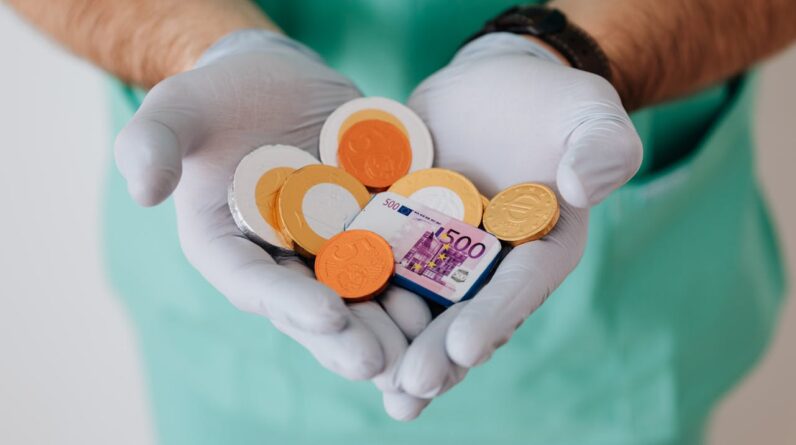
The healthcare sector is renowned for its stability and defensive characteristics, making it a suitable investment during difficult economic times. With its acyclical nature, this sector remains more stable compared to others. This article delves into the characteristics of the healthcare sector and provides insights on how to invest in it effectively.
Overview of the healthcare sector
The healthcare sector plays a pivotal role in the global stock market. In the United States, it represents approximately 13% of the stock market, underscoring its significance and complexity within financial markets. The sector’s prominence has been magnified recently due to the COVID-19 pandemic, highlighting companies involved in vaccine production and other medical devices.
However, the healthcare sector’s scope extends beyond these areas, encompassing several key categories:
Biotechnology and pharmaceutical companies
These companies are at the forefront of developing and distributing drugs, tests, and vaccines. They are pivotal in combating diseases and improving public health.
Hospital companies and medical clinics
These entities provide direct healthcare services to patients, playing a crucial role in the healthcare delivery system.
Medical device companies
These companies develop medical technologies that assist doctors and patients, enhancing the effectiveness of healthcare services.
A defensive sector
The healthcare sector is considered a defensive sector, suitable for challenging economic periods due to its acyclical and stable nature. It predominantly comprises large-cap companies with robust balance sheets, characterized by significant cash flows and substantial investments in research and development. These attributes contribute to the sector’s attractiveness as an investment option.
Factors driving growth in the healthcare sector
Several factors are poised to drive the future growth of the healthcare sector:
Aging population
The increasing number of older people globally will lead to a higher demand for drugs and medical care, driving growth in the sector.
Innovative medical technologies
The development of new, highly innovative medical technologies is a cornerstone of healthcare advancement, leading to improved treatments and patient outcomes.
Increased accessibility to care
Increased accessibility to healthcare, especially in developing countries, will expand the market for healthcare services and products.
Rising health expenditure
Both public and private health spending are on the rise globally, further stimulating growth in the healthcare sector.
Emerging technological innovations
Technological innovations are set to revolutionize the healthcare sector, offering numerous investment opportunities. Some notable innovations include:
Biotech and medtech
Advancements in biotechnology and medical technology are driving significant changes in healthcare, leading to more effective treatments and medical solutions.
Robotic surgery
Robotic surgery enhances precision in medical procedures, offering improved outcomes for patients and creating new investment avenues.
Liquid biopsy
Liquid biopsy represents a non-invasive method for detecting cancer and other diseases, offering significant potential for early diagnosis and treatment.
Home medicine and e-health systems
Remote healthcare through e-health systems is becoming increasingly popular, providing convenient and efficient care to patients at home.
Genetic studies and therapies
Advancements in genetic research and therapies are opening new frontiers in personalized medicine, offering targeted treatments for various conditions.
Medical devices and wearables
Medical devices and wearables connected with 5G and AI are revolutionizing patient monitoring and care, providing real-time health data and improving patient outcomes.
Virtual medical care
Virtual medical care is expanding access to healthcare services, allowing patients to consult with healthcare providers remotely and conveniently.
Investment strategies in healthcare
Despite being a defensive sector, healthcare remains highly profitable. According to Morningstar data, the healthcare sector’s annualized return in 2021 was approximately 20.12%, based on the average returns of the top 10 global stock funds specializing in healthcare.
Diversified investment options
For investors who are not experts in the healthcare sector, it is advisable to avoid purchasing individual shares due to the sector’s complexity and unpredictability. Instead, consider investing in active funds or thematic ETFs, such as:
- Health Care Select Sector SPDR ETF
- Vanguard Health Care Index Fund ETF
- iShares Nasdaq Biotechnology ETF
These investment options allow for diversification across numerous companies with varying business models, mitigating specific risks.
Maintaining a diversified portfolio
While investing in healthcare offers promising opportunities, it is crucial to maintain a diversified portfolio. Avoid concentrating all investments in one sector, and adopt a long-term investment perspective of at least 5 to 10 years to maximize potential returns.
Read also: Brent Oil and WTI: what is the difference?






